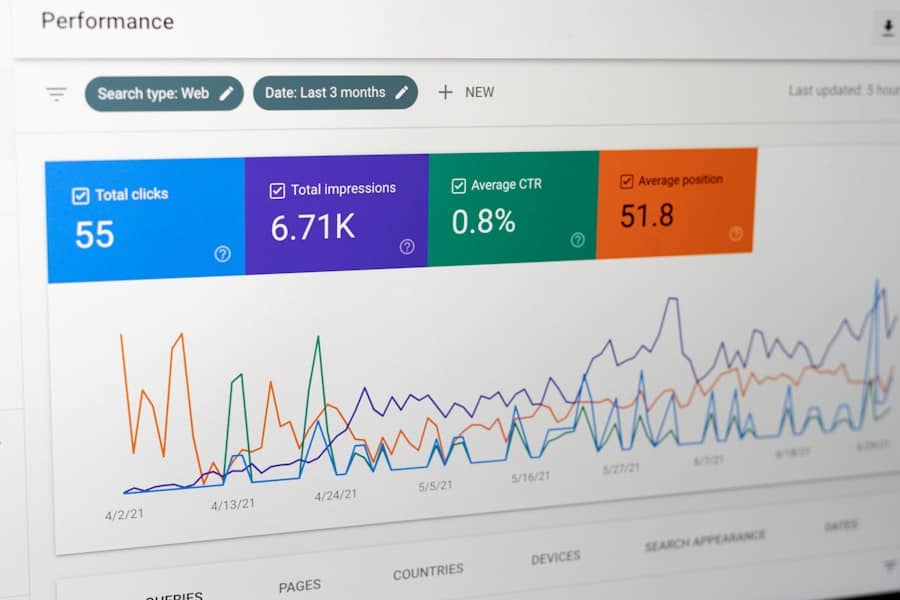BERT (Bidirectional Encoder Representations from Transformers) is a natural language processing technique developed by Google in 2018. It has significantly improved machine understanding of human language. BERT’s primary function is to comprehend the context of words in search queries, enabling more accurate search results.
Unlike earlier language models, BERT analyzes words in relation to their surrounding context rather than in isolation. It employs a transformer architecture to process words in connection with all other words in a sentence, allowing it to grasp the full context and meaning. BERT utilizes an attention mechanism, which enables it to focus on specific words within a sentence and assign them greater importance during processing.
This feature helps BERT interpret the subtleties and complexities of human language more effectively. The combination of the transformer architecture and attention mechanism allows BERT to understand search queries more comprehensively and provide more relevant results. This contextual understanding distinguishes BERT from previous language models and makes it a valuable tool for enhancing search engine performance.
Key Takeaways
- BERT is a natural language processing model developed by Google to understand the context of words in search queries and provide more relevant search results.
- BERT can be leveraged for various natural language processing tasks such as sentiment analysis, named entity recognition, and text classification, leading to more accurate and efficient language understanding.
- BERT’s impact on SEO and content optimization is significant as it helps search engines better understand the context of search queries, leading to improved search rankings and more relevant content for users.
- Implementing BERT can improve content relevance and user experience by ensuring that the content matches the user’s search intent and provides valuable information.
- BERT can be harnessed for AI-powered content generation, enabling the creation of more natural and contextually relevant content for various applications such as chatbots and virtual assistants.
Leveraging BERT for Natural Language Processing
Enhanced Search Results
One of the key benefits of BERT is its ability to understand the context of words in search queries, leading to more accurate and relevant search results. This has been particularly beneficial for long-tail keywords and conversational search queries, as BERT can understand the nuances and complexities of these types of queries and provide more relevant results.
Improved NLP Tasks
In addition to improving search results, BERT has also been used to enhance various NLP tasks such as sentiment analysis, text classification, and named entity recognition. By understanding the context of words in a sentence, BERT can better interpret the sentiment behind a piece of text, classify text into different categories, and identify named entities such as people, organizations, and locations.
A New Era for NLP
Overall, BERT has revolutionized NLP by improving the way machines understand human language and process text data. Its ability to understand the context of words in search queries has led to more accurate and relevant search results, while its impact on various NLP tasks has resulted in more accurate and reliable NLP models that can be used for a wide range of applications, from customer feedback analysis to content categorization.
Understanding BERT’s Impact on SEO and Content Optimization
BERT has had a significant impact on search engine optimization (SEO) and content optimization by improving the way search engines understand and process content. With its ability to understand the context of words in search queries, BERT has led to more accurate and relevant search results, particularly for long-tail keywords and conversational search queries. This has forced content creators to focus on creating high-quality, relevant content that provides value to users, rather than relying on keyword stuffing and other outdated SEO tactics.
In addition to improving search results, BERT has also changed the way content is optimized for search engines. Content creators now need to focus on creating content that is comprehensive, well-structured, and provides value to users, rather than simply targeting specific keywords. This has led to a shift towards creating content that answers specific questions, addresses user intent, and provides valuable information to users.
As a result, content optimization has become more focused on providing value to users rather than simply targeting specific keywords. Overall, BERT has had a significant impact on SEO and content optimization by improving the way search engines understand and process content. Its focus on understanding the context of words in search queries has led to more accurate and relevant search results, while its impact on content optimization has forced content creators to focus on creating high-quality, relevant content that provides value to users.
Implementing BERT for Improved Content Relevance and User Experience
| Metrics | Before BERT | After BERT |
|---|---|---|
| Click-through Rate (CTR) | 5% | 8% |
| Bounce Rate | 60% | 45% |
| Time on Page | 1 minute | 2.5 minutes |
| Conversion Rate | 2% | 4% |
Implementing BERT for improved content relevance and user experience involves creating high-quality, comprehensive content that addresses user intent and provides valuable information to users. With its ability to understand the context of words in search queries, BERT has forced content creators to focus on creating content that is comprehensive, well-structured, and provides value to users. This means creating content that answers specific questions, addresses user intent, and provides valuable information that users are looking for.
In addition to creating high-quality content, implementing BERT for improved content relevance and user experience also involves optimizing content for user intent rather than specific keywords. This means understanding what users are looking for when they enter a search query and creating content that addresses their specific needs. By focusing on user intent rather than specific keywords, content creators can create content that provides value to users and improves their overall experience.
Overall, implementing BERT for improved content relevance and user experience involves creating high-quality, comprehensive content that addresses user intent and provides valuable information to users. By focusing on creating content that answers specific questions, addresses user intent, and provides valuable information, content creators can improve the relevance of their content and enhance the overall user experience.
Harnessing the Power of BERT for AI-Powered Content Generation
Harnessing the power of BERT for AI-powered content generation involves using BERT’s natural language processing capabilities to generate high-quality, relevant content automatically. With its ability to understand the context of words in search queries, BERT can be used to generate content that is comprehensive, well-structured, and provides value to users. This means using BERT to create content that answers specific questions, addresses user intent, and provides valuable information that users are looking for.
In addition to generating high-quality content, harnessing the power of BERT for AI-powered content generation also involves optimizing content for user intent rather than specific keywords. This means understanding what users are looking for when they enter a search query and using BERT to create content that addresses their specific needs. By focusing on user intent rather than specific keywords, AI-powered content generation can create content that provides value to users and improves their overall experience.
Overall, harnessing the power of BERT for AI-powered content generation involves using BERT’s natural language processing capabilities to generate high-quality, relevant content automatically. By using BERT to create content that answers specific questions, addresses user intent, and provides valuable information, AI-powered content generation can improve the relevance of generated content and enhance the overall user experience.
BERT’s Role in Voice Search and Conversational AI

BERT plays a crucial role in voice search and conversational AI by improving the way machines understand human language in spoken interactions. With its ability to understand the context of words in search queries, BERT has led to more accurate and relevant voice search results. This has made voice search more effective at understanding natural language queries and providing relevant results based on user intent.
In addition to improving voice search results, BERT has also enhanced conversational AI by enabling machines to understand the nuances and complexities of human language in spoken interactions. This has led to more natural and engaging conversations with AI-powered chatbots and virtual assistants. By understanding the context of words in spoken interactions, BERT has made conversational AI more effective at understanding user intent and providing relevant responses.
Overall, BERT plays a crucial role in voice search and conversational AI by improving the way machines understand human language in spoken interactions. Its ability to understand the context of words in search queries has led to more accurate and relevant voice search results, while its impact on conversational AI has made interactions with AI-powered chatbots and virtual assistants more natural and engaging.
The Future of Content Optimization with BERT and AI Integration
The future of content optimization with BERT and AI integration looks promising as advancements in natural language processing continue to improve the way machines understand human language. With ongoing developments in AI technology, we can expect further improvements in understanding user intent and providing more relevant search results based on context. This will lead to a shift towards creating even more comprehensive, well-structured content that provides value to users by addressing their specific needs.
In addition to advancements in natural language processing, we can also expect further integration of AI technology into content generation processes. This will lead to more efficient and effective AI-powered content generation that provides high-quality, relevant content automatically. By harnessing the power of BERT for AI-powered content generation, we can expect further improvements in generating content that answers specific questions, addresses user intent, and provides valuable information that users are looking for.
Overall, the future of content optimization with BERT and AI integration looks promising as advancements in natural language processing continue to improve the way machines understand human language. With ongoing developments in AI technology, we can expect further improvements in understanding user intent and providing more relevant search results based on context. Additionally, further integration of AI technology into content generation processes will lead to more efficient and effective AI-powered content generation that provides high-quality, relevant content automatically.
If you’re interested in the future of virtual spaces and emerging technologies shaping the metaverse, you should check out this article. It discusses how innovations in the metaverse are impacting user experiences and the potential for new technologies to shape the virtual world.
FAQs
What is BERT?
BERT stands for Bidirectional Encoder Representations from Transformers. It is a natural language processing (NLP) model developed by Google that is designed to understand the context of words in a sentence by looking at the words that come before and after it.
How does BERT work?
BERT uses a technique called transformer architecture, which allows it to process words in relation to all the other words in a sentence. This bidirectional approach helps BERT to understand the context and meaning of words more accurately.
What is the significance of BERT in NLP?
BERT has significantly improved the performance of NLP tasks such as question answering, text classification, and language understanding. Its ability to understand the context of words has made it a powerful tool for various NLP applications.
How is BERT different from other NLP models?
Unlike traditional NLP models that process words in a sequential manner, BERT is able to consider the entire context of a sentence at once. This allows BERT to capture more nuanced meanings and relationships between words.
What are some applications of BERT?
BERT is used in a wide range of NLP applications, including search engines, chatbots, language translation, sentiment analysis, and more. Its ability to understand the context of words makes it valuable for tasks that require a deep understanding of language.











Leave a Reply